If a rising tide lifts all boats, what happens when the tide goes out?
Turkish lawyers continue to complain about the “unsustainable” pressure to lower fees. But who’s to blame for the phenomenon, and what’s to be done, are unclear. And is the problem even real, or just a natural by-product of healthy competition?
Shrinking Elbow Room
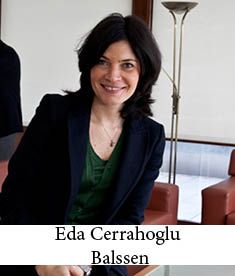 The past decade has seen the sleepy Turkish legal market come to life, as the four international law firms with long-established presences (White & Case, Gide Loyrette Nouel, Salans, and Denton Wilde Sapte (the latter two of which merged in 2013)) have been joined by over 10 more since 2009 alone. CMS, the most recent arrival, opened its office in 2013.
The past decade has seen the sleepy Turkish legal market come to life, as the four international law firms with long-established presences (White & Case, Gide Loyrette Nouel, Salans, and Denton Wilde Sapte (the latter two of which merged in 2013)) have been joined by over 10 more since 2009 alone. CMS, the most recent arrival, opened its office in 2013.
But the boom may be over. Not only was 2014 the first year in many in which no new ILFs arrived on the shores of the Bosphorus, but the number of international law firms in Turkey actually shrank for the first time ever, as DLA Piper ended its formal association with Yuksel Karkin Kucuk (YKK) and allowed its Foreign Attorney Partnership in Turkey to expire. (It doesn’t appear DLA Piper is planning to return anytime soon, either, as the firm has allowed its foreign lawyers in Turkey – Partners Jonathan Clarke and Tamsyn Mileham – to transfer over to YKK).
While some Turkish lawyers believe the arrival of more ILFs is inevitable, Eda Cerrahoglu Balssen, a Partner at the long-established Cerrahoglu Law Firm, says that “as far as I know, the foreign firms that have entered the market recently – not the old ones – they have not really found what they’re looking for, or met their expectations from a few years ago. For various reasons. One is the pricing in the market, which is pretty different than what European law firms are used to. The clients are cost conscious. So that’s one area that is disappointing for the foreign firms.”
One partner at an international law firm (as he requested to remain anonymous, we’ll call him “Partner 1”) disagrees. He says, “I think there are good opportunities for international firms. The difficulty for them is finding the right partner. It’s a slower game; it’s not an overnight success, but if you look at what Allen & Overy are beginning to build, you can see that, if you find the right partners, you can make a success out of the Turkish market. You can still be very, very profitable, because the fee pressure may be more severe in certain sectors, but the cost base is still relatively low, and you don’t have to pay people exorbitant amounts.”
And Partner 1 thinks the future for international firms is bright. “I think a new generation of lawyers is coming through. People are a lot more savvy, a lot more Western-oriented, and that again represents an opportunity for the international firms … and I think clients are beginning to understand that they need to use them, and not go to the gray-haired guy with 50-years of experience.” In his opinion, the fight is over, the battle won: “the banks are rarely using Verdi, Yazici, any more, compared to White & Case, Clifford Chance, and Allen & Overy.” Thus, he concludes, “the international firms are taking a market share, even if that market is not so massive at the moment because of the fee pressure.”
Ah, the fee pressure.
Fee Pressure Remains Intense – or Does It?
“There’s real [fee] pressure …. There is premium work in Turkey, but not enough to feed the entire market. And lawyers are fighting over these premium deals by sometimes offering huge discounts. It’s a buyer’s market at the moment, and clients feel confident that just giving the work is enough, to get the credit of working for X company, and for X deal. It’s, of course, not sustainable”Zeynep Cakmak
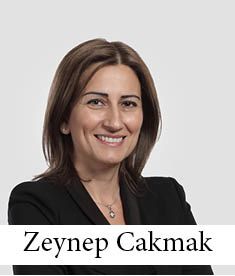 If the battle is over, it appears the news hasn’t filtered through the market yet, as long-established Turkish firms and an ever-increasing number of spin-offs – smaller offices started by partners with ILF experience – continue to jostle for space with their newer international law firm neighbors. As a result, complaints about the pressure on fees resulting from what many believe to be an unsustainable number of firms are a common feature of any conversation with lawyers.
If the battle is over, it appears the news hasn’t filtered through the market yet, as long-established Turkish firms and an ever-increasing number of spin-offs – smaller offices started by partners with ILF experience – continue to jostle for space with their newer international law firm neighbors. As a result, complaints about the pressure on fees resulting from what many believe to be an unsustainable number of firms are a common feature of any conversation with lawyers.
As is true so often in Turkey, however, everybody characterizes the problem, and assigns the blame, differently. The “spin-offs” are often accused of undermining the traditional fee structure by offering subpar services at unsustainable rates. One managing partner at a top tier law firm (“MP 1”) notes that, “of course when it comes to important and critical legal matters, clients still look for quality, but most of the time they want to pay very low fees, and they are happy with mediocre legal service they get from law firms, and that of course makes those split-off law firms survive.”
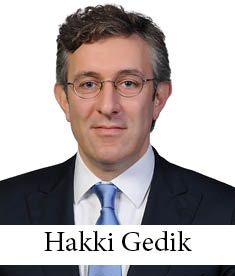 Hakki Geddik, who in 2012 split off from market-leading Herguner Bilge Ozeke with colleague Gokhan Eraksoy and a team to tie up with Allen & Overy, describes a similar phenomenon. In Geddik’s opinion, Turkish clients can be divided into two groups: those who make their decision about external counsel primarily on price, and the “growing number of more sophisticated Turkish clients” who factor in other relevant criteria. “Whenever I go into an RFP I try to anticipate whether the client falls into the first or the second category,” Geddik says. He sighs, “Many Turkish clients fall into the first category.”
Hakki Geddik, who in 2012 split off from market-leading Herguner Bilge Ozeke with colleague Gokhan Eraksoy and a team to tie up with Allen & Overy, describes a similar phenomenon. In Geddik’s opinion, Turkish clients can be divided into two groups: those who make their decision about external counsel primarily on price, and the “growing number of more sophisticated Turkish clients” who factor in other relevant criteria. “Whenever I go into an RFP I try to anticipate whether the client falls into the first or the second category,” Geddik says. He sighs, “Many Turkish clients fall into the first category.”
A foreign partner at an international law firm suggests that the pressure to cut fees is especially acute in the Project Finance field, “because the international law firms that are here are mainly focusing on that area.” He admits to concern: “I don’t really know where that’s going to go, because there comes a low point where you can’t charge any less.”
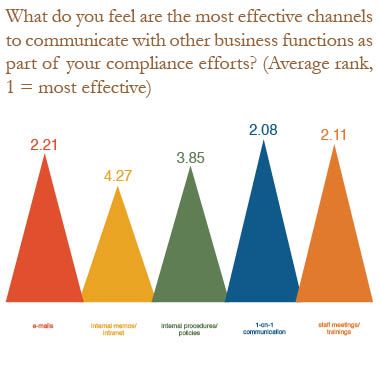
Another common complaint is that many firms “buy” client work at unsustainable levels as part of a long-term strategy that smaller firms can’t match. Like the other proposed causes, there’s obviously a basis in fact. One well-established managing partner in the market complained that: “I don’t want to give a name, but I know an international law firm that’s making a 70% discount on the rates of one of its named partners. It’s incredible. It’s lower than a mid-level associate, just to get the premium work.”
And it’s not just the international firms, of course. A managing partner at a well-known local firm (“MP 2”) refers to the rankings produced by the legal directories (see page 26) in conceding that, “since our position is in the second tier, this year we decided to give huge discounts to get huge projects.”
“The Game”
Turkish Experts Disagree on Outlook for 2015
Senior Partner at Leading Turkish Law Firm: “Foreign investment has definitely slowed. That’s how it should be. I think if a company has not yet entered the market and is now considering it, I think they should have a good plan and do all their research, and take all their time before deciding to do so. Because it’s horrifying in a way – unfortunately, and it’s not something I’m proud of, but unfortunately that’s the case. But new entries should be … they’re right to be careful.”
Zeynep Cakmak: “We certainly have seen a slow down in the entry of foreign investors into Turkey due to the political developments in the past 2 years. The constant election environment has also affected the appetite of foreign investors. This environment will likely continue until the June general elections.”
Hakki Geddik: “From my very subjective personal experience I haven’t seen one deal that’s been put on hold because of political developments, neither from the Gezi protests or more recently, so from my personal experience, I can say that there has been no hesitance on the part of foreign investors to invest in Turkey. As far as I can see, financial investors take the view that the elections are a done deal. I don’t see any clients postponing a decision to invest in Turkey based on the elections.”
Onur Kucuk: “I spoke with a number of Turkish PE managers in the past couple of weeks. I was fairly pessimistic about 2015 until I spoke with them, but their expectations for 2015 were surprisingly positive. And now I’m more confident and more optimistic about 2015. There will be a few large deals this year in Turkey, and the legal market this year will be growing.”
Selin Ozbek Cittone: “It’s hard to tell, because you don’t know how the country is going to react to the elections and all these things. It’s hard to say, we know that foreign investment is slower, compared to the past. But I’m also not pessimistic, to be honest. We have a lot to do. In the beginning of 2014 we said the same thing – ‘we don’t know how it’s going to go’ – but it went well for us, and ended up being better even than 2013!”
Managing Partner at International Law Firm: “I don’t want to be too pessimistic, because this country has recovered from such periods before, and it will recover at one point, but next year will be a difficult year, I think.”
Hakki Geddik: “Yes. I’m pretty optimistic that 2015 will be better. Every year for us has been better than the year before it, so we expect this to be much better as well.”
Levent Celepci: “We’re not very, very bullish for 2015, but things should be better by the second half of the year. We’re going to have a slow first part of the year, until election time, and then 2-3 months that will be quite exciting, and then the summer months that are always slow. So we’re basically going to lose one quarter, but after that things should come to normal.”
 To some extent, however, the constant pointing to fee pressures has – after all these years – itself become a cliché. Erim Bener, for one, says with a smile that fee pressure has always been an issue in Turkey, perhaps with the exception of the early 2000s, and that “this is part of the game in Turkey.”
To some extent, however, the constant pointing to fee pressures has – after all these years – itself become a cliché. Erim Bener, for one, says with a smile that fee pressure has always been an issue in Turkey, perhaps with the exception of the early 2000s, and that “this is part of the game in Turkey.”
In response to complaints about deliberate “buying” of deals, one managing partner at an international law firm in Istanbul laughed that there’s nothing new under the sun – and pointed out that a number of now-strong Turkish firms originally elbowed their way to the top of the market by doing just that. He said, “and so the culture is very familiar with working up the ranks, even if at times that means buying deals, so I can say, this is nothing new for us.”
It’s also been suggested that some of those complaining the loudest may be confusing a global problem for a local one. Selin Ozbek Cittone, the Managing Partner at Ozbek Attorneys at Law, refers to the global financial crisis that hit all European legal markets back in 2007/2008. According to Cittone, fee pressure is “a problem,” in Turkey as everywhere else, but “somehow everyone has gotten used to the fact that you have to cap budgets, and things like that, since 2008. This is a habit not only for lawyers in Turkey, but also in Europe.” Ultimately, Cittone says, the market has more or less adapted to the new reality, and “we’ve gotten used to the idea that we need to somehow rationalize our fee, and reasonably explain why we need to charge a certain amount of Euros or dollars for certain projects.”
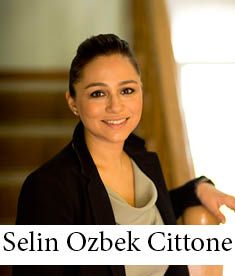
And in any event, not everyone identifies fee pressure as the defining characteristic of the market. Geddik says, “I don’t think the challenge is really on the pricing side. I think the challenge of the Turkish market is on the service-level side.” He believes that many partners at local firms focus exclusively on the generation of the work, leaving its execution to the associates. “So,” he says, “I really think that the main challenge that we as Turkish lawyers face is the need to convince clients that even seasoned practitioners are still willing to fight the battle in the trenches and do not see themselves as managers sitting in the office behind the desk and having junior lawyers doing the actual work.”
Other lawyers believe that they see signs that clients are beginning to notice the difference. Several partners at international law firms described what they see as a “slide towards quality” in the market. Partner 1 elaborated that, “for the first time you’re beginning to see the big Turkish industrialist groups looking for international law firm capability, rather than the old Turkish guard, so you’re seeing a decline in my view of the traditional Turkish firms, and a rise of the more savvy international law firms.”
It Takes Two to Tango
“There’s so much diversification, and a split between local law firms. At one point it will become saturated. It has to. It can not continue like this. This is not healthy. There’s a cake. It’s not a very big cake. And everyone’s trying to take a slice from it. Consolidation must happen.”MP 1
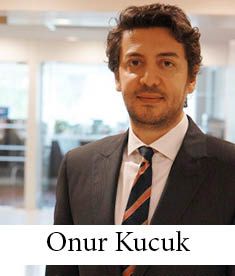 Regardless of who’s to blame, many believe that firm mergers are inevitable. Levent Celepci, Managing Partner at the CTK Law Office – the firm tied up with Schoenherr – calls consolidation “the obvious answer” to the “huge increase in competition we’ve seen within a short period of time.”
Regardless of who’s to blame, many believe that firm mergers are inevitable. Levent Celepci, Managing Partner at the CTK Law Office – the firm tied up with Schoenherr – calls consolidation “the obvious answer” to the “huge increase in competition we’ve seen within a short period of time.”
And right on time, 2014 witnessed the first-ever merger of two Turkish firms, as former White & Case Partner Cem Davutoglu agreed to subsume his eponymous firm into the larger Bener Law Office, which as a result grew to over 50 fee earners. Although both Erim Bener and Davutoglu describe the merger as a remarkable success, no other firms have followed suit so far.
Is consolidation the answer? Well, it wouldn’t hurt. More elbow room means higher fees. But of course nobody suggests that they themselves are considering merging with another firm – the suggestion is always that others should sacrifice their personal and professional goals for the betterment of the market as a whole.
In fact, it appears that many of the Turkish lawyers who call for others to merge may be remembering the “golden days” when competition wasn’t as fierce. On the other hand, competition is the familiar by-product of dynamic and bustling markets, and few Turkish lawyers wish to see those markets dry up.
So can lawyers look forward to a time when Turkey will remain as popular with investors as it is today, but fees will be back where they were 10 years ago? As Jake Barnes responded in Hemingway’s The Sun Also Rises: “Isn’t it pretty to think so?”
Thanks also to Tolga Ismen, Serhan Kocakli, and Begum Ozaydin for their help in the preparation of this article none of whom were quoted anonymously in this story.
This Article was originally published in Issue 2.1. of the CEE Legal Matters Magazine. If you would like to receive a hard copy of the magazine, you can subscribe here.


 If the battle is over, it appears the news hasn’t filtered through the market yet, as long-established Turkish firms and an ever-increasing number of spin-offs – smaller offices started by partners with ILF experience – continue to jostle for space with their newer international law firm neighbors. As a result, complaints about the pressure on fees resulting from what many believe to be an unsustainable number of firms are a common feature of any conversation with lawyers.
If the battle is over, it appears the news hasn’t filtered through the market yet, as long-established Turkish firms and an ever-increasing number of spin-offs – smaller offices started by partners with ILF experience – continue to jostle for space with their newer international law firm neighbors. As a result, complaints about the pressure on fees resulting from what many believe to be an unsustainable number of firms are a common feature of any conversation with lawyers. Hakki Geddik, who in 2012 split off from market-leading Herguner Bilge Ozeke with colleague Gokhan Eraksoy and a team to tie up with Allen & Overy, describes a similar phenomenon. In Geddik’s opinion, Turkish clients can be divided into two groups: those who make their decision about external counsel primarily on price, and the “growing number of more sophisticated Turkish clients” who factor in other relevant criteria. “Whenever I go into an RFP I try to anticipate whether the client falls into the first or the second category,” Geddik says. He sighs, “Many Turkish clients fall into the first category.”
Hakki Geddik, who in 2012 split off from market-leading Herguner Bilge Ozeke with colleague Gokhan Eraksoy and a team to tie up with Allen & Overy, describes a similar phenomenon. In Geddik’s opinion, Turkish clients can be divided into two groups: those who make their decision about external counsel primarily on price, and the “growing number of more sophisticated Turkish clients” who factor in other relevant criteria. “Whenever I go into an RFP I try to anticipate whether the client falls into the first or the second category,” Geddik says. He sighs, “Many Turkish clients fall into the first category.”
 To some extent, however, the constant pointing to fee pressures has – after all these years – itself become a cliché. Erim Bener, for one, says with a smile that fee pressure has always been an issue in Turkey, perhaps with the exception of the early 2000s, and that “this is part of the game in Turkey.”
To some extent, however, the constant pointing to fee pressures has – after all these years – itself become a cliché. Erim Bener, for one, says with a smile that fee pressure has always been an issue in Turkey, perhaps with the exception of the early 2000s, and that “this is part of the game in Turkey.”
 Regardless of who’s to blame, many believe that firm mergers are inevitable. Levent Celepci, Managing Partner at the CTK Law Office – the firm tied up with Schoenherr – calls consolidation “the obvious answer” to the “huge increase in competition we’ve seen within a short period of time.”
Regardless of who’s to blame, many believe that firm mergers are inevitable. Levent Celepci, Managing Partner at the CTK Law Office – the firm tied up with Schoenherr – calls consolidation “the obvious answer” to the “huge increase in competition we’ve seen within a short period of time.”

